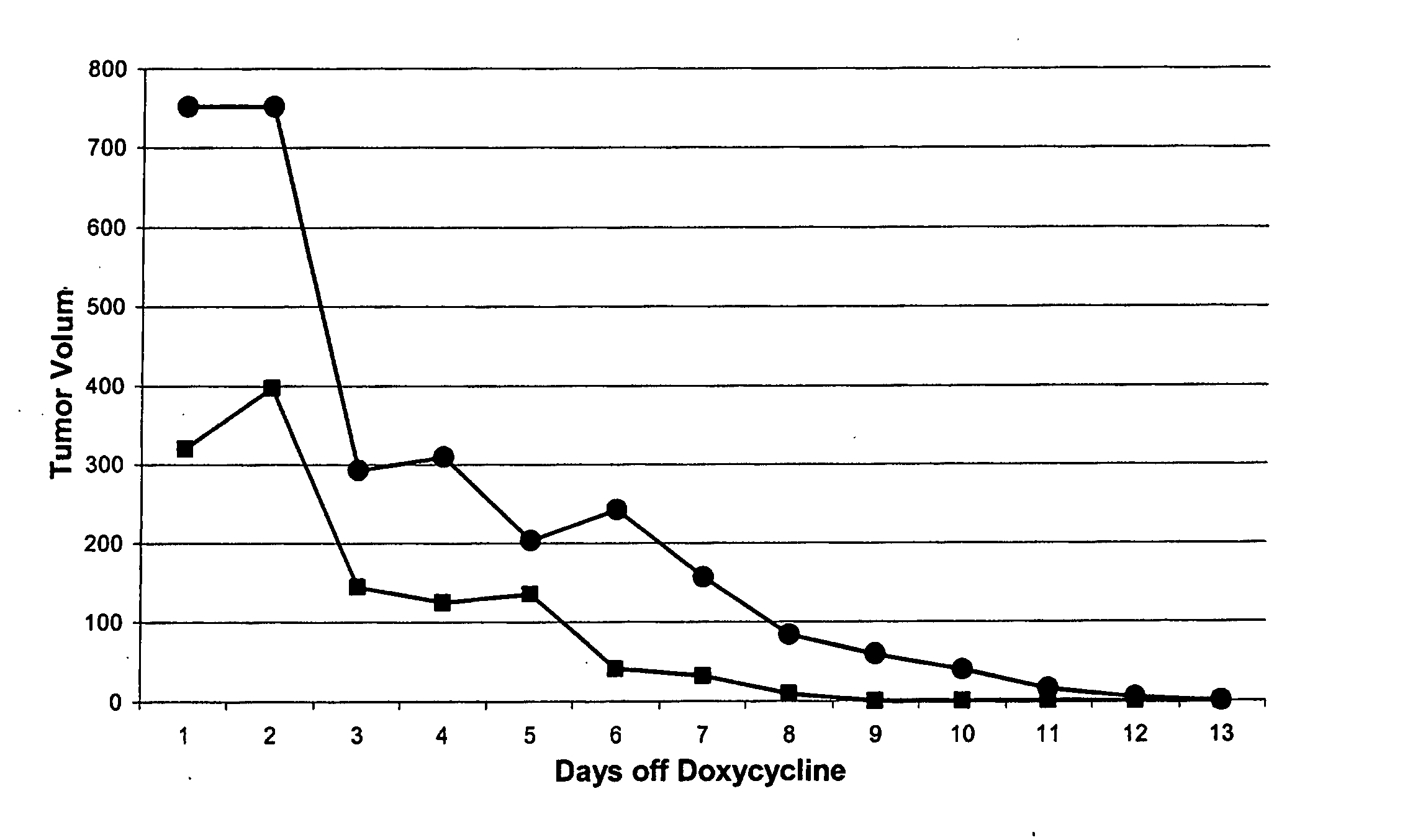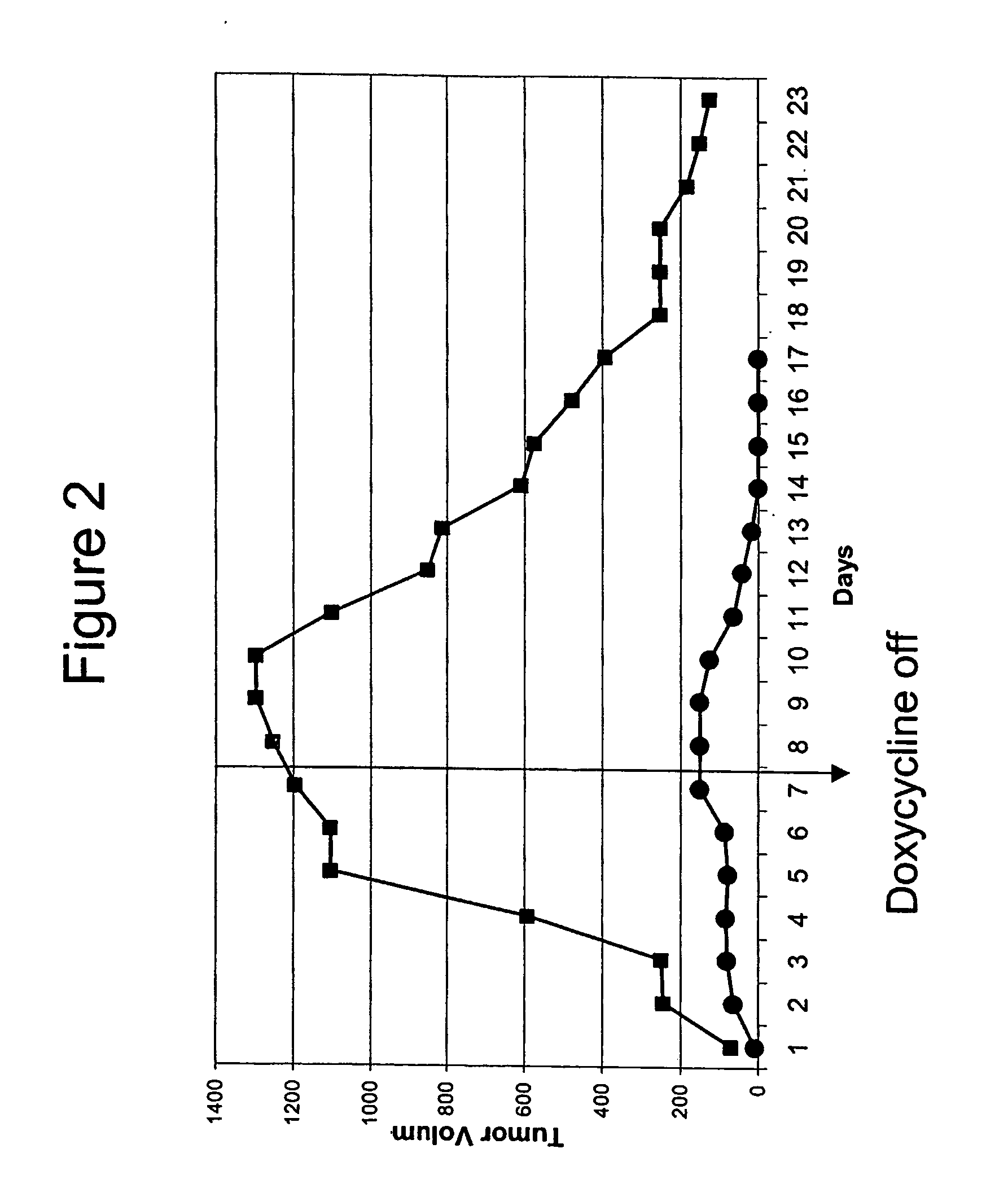Chimeric Cancer Models
a cancer model and chimeric technology, applied in the field of chimeric cancer models, can solve the problems of time-consuming process of generating complex disease models containing multiple genetic mutations, and achieve the effect of maintaining the pluripotency of the es cell
- Summary
- Abstract
- Description
- Claims
- Application Information
AI Technical Summary
Benefits of technology
Problems solved by technology
Method used
Image
Examples
example 1
[0057] The frequency of HER2 / neu overexpression in lung cancer has mostly been studied in non-small cell lung cancer, and the reported frequencies of HER2 / neu overexpression range from 5 to 59%. The patients with HER2 / neu-positive tumors have significantly shorter survival. HER2 / neu overexpression has also been shown to contribute to tumorigenesis in lung tumor cell lines. See, e.g., Hirsch et al., Lung Cancer 36:263-4 (2002); and Gatzemeier et al., Annals of Oncology 15:19-27 (2004). However, anti-HER2 / neu antibodies (trastuzumab or HERCEPTIN®) do not seem efficacious in treating HER2-positive non-small cell lung cancer in humans. Gatzemeier et al., supra.
[0058] Chimeric mice that inducibly overexpress HER2 / neu in their lungs and develop lung cancer shortly after induction were produced. These mice were used to show a cause-effect relationship between HER2 / neu and lung cancer. Since a human HER2 / neu coding sequence was used in making the mice, the mice are u...
example 2
HER2 Breast Cancer Model
[0063] Ink4a homozygous null ES cells were co-transfected with the following four constructs, as separate fragments: MMTV-rtTA, TetO-Her2V664 Eneu, TetO-luciferase and PGK-puromycin. Puromycin-resistant cells were genotyped by PCR and Southern blot. Inducibility of the oncogenes in ES cells was analyzed by northern blot. The transfected ES cells were injected into C57BL / 6 blastocysts, which were transplanted into pseudo-pregnant female mice for gestation leading to birth of the chimeric mice.
[0064] The mouse mammary tumor virus long terminal repeat (MMTV) is used to drive breast-specific expression of the reverse tetracycline transactivator (rtTA). The rtTA provides for breast-specific expression of the HER2 activated oncogene when doxycycline is provided to the mice, e.g., in their drinking water.
[0065] Inducibility of the HER2 oncogene and luciferase was confirmed by RT-PCR and luciferase assay (respectively), using cultured cells derived from the mouse....
example 3
K-RAS Breast Cancer Model
[0069] Ink4a homozygous null ES cells were co-transfected with the following four constructs, as separate fragments: MMTV-rtTA, TetO-K-RASG12V, TetO-luciferase and PGK-puromycin. Puromycin-resistant cells were genotyped by PCR and Southern blot. Inducibility of the oncogenes in ES cells was analyzed by northern blot. The transfected ES cells were injected into C57BL / 6 blastocysts, which were transplanted into pseudo-pregnant female mice for gestation leading to birth of the chimeric mice.
[0070] Inducibility of the K-RAS oncogene and luciferase was confirmed by RT-PCR and luciferase assay (respectively), using cultured cells derived from the mouse. Mammary glands were removed from chimeric mice and digested with collagenase. Half of the organoids collected were cultured in the presence of doxycycline, and the other half was cultured without doxycycline. After five days in culture, the cells were trypsinized, and one tenth of the cells were used for lucifera...
PUM
 Login to View More
Login to View More Abstract
Description
Claims
Application Information
 Login to View More
Login to View More - R&D
- Intellectual Property
- Life Sciences
- Materials
- Tech Scout
- Unparalleled Data Quality
- Higher Quality Content
- 60% Fewer Hallucinations
Browse by: Latest US Patents, China's latest patents, Technical Efficacy Thesaurus, Application Domain, Technology Topic, Popular Technical Reports.
© 2025 PatSnap. All rights reserved.Legal|Privacy policy|Modern Slavery Act Transparency Statement|Sitemap|About US| Contact US: help@patsnap.com



